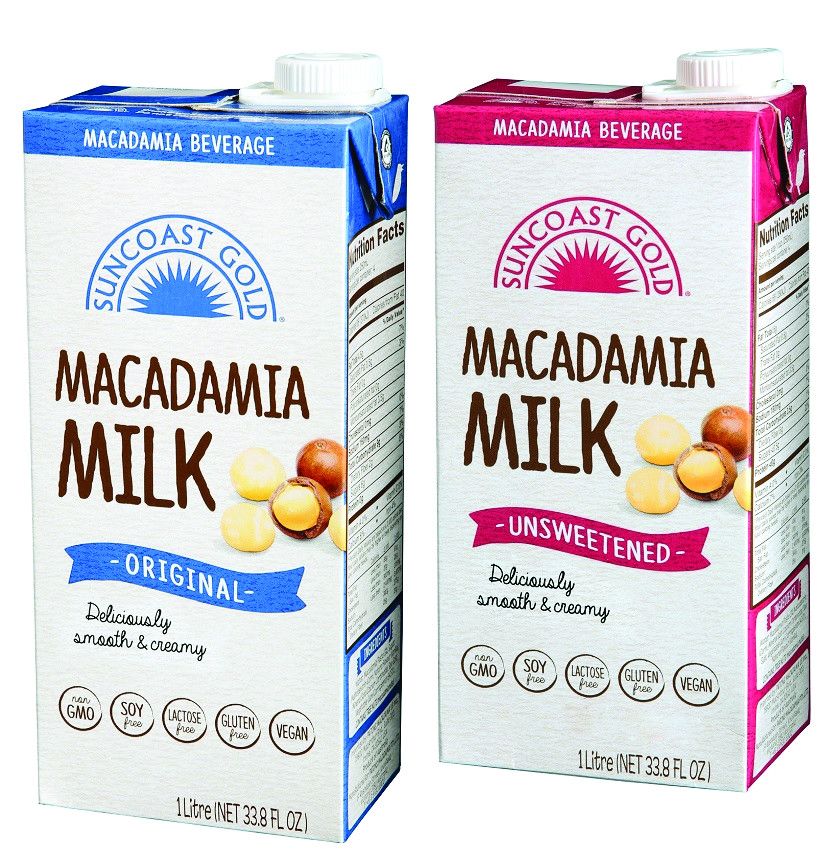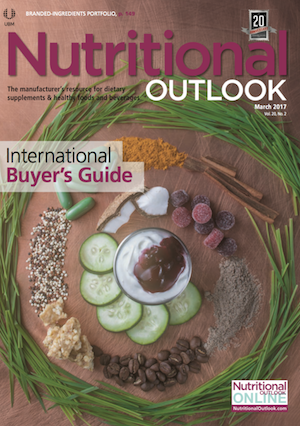Plant-Based Milks Branching Out
From pistachios to peas, emerging ingredients for plant-based milks are opening the category up to additional applications and consumers.
Thanks to its monounsaturated fats, macadamia milk is smooth and creamy, says the Patons Macadamia company.

There’s never been a better time to be a consumer of plant-based milks. Between the ever-growing list of ingredients used to create these beverages and the explosion of striking new flavors, this chunk of the dairy-alternatives market is booming. In fact, the dairy sector has become so concerned about the success of plant-based milks that it recently prompted 32 Congressmen to write a letter to FDA. The letter, which requests the agency enforce against non-dairy beverages carrying the term milk, was meant to prevent dairy from losing further market share to plant-based alternatives.
No word yet on FDA’s response, but with each passing month the list of plant-based milks on the market only grows. To start with, pistachio and pecan emerged as two new primary ingredients for U.S. plant-based milks in the past year, says Lu Ann Williams, director of innovation at Innova Market Insights. In particular, she points to the new Dark Chocolate Pistachio Milk and Strawberry Pecan Milk from NüMoo, both of which launched in March of 2016.
That’s just the tip of the iceberg. Barley, hazelnuts, walnuts, chia, hemp, and other plant ingredients are now being used to make milks, with formulators even experimenting with plant-based blends. For instance, Williams notes, the new Dream Blends unsweetened beverage from Hain Celestial, which launched last August, combines coconut, almond, and chia.
Another standout launch from 2016 is Ripple, a line of plant-based milks made from yellow peas. Neil Renninger, PhD, co-founder and co-CEO of Ripple Foods, says that while most alternative milks lack the protein content of dairy milk, Ripple offers 8 grams of protein per serving. Ripple is also suitable for uses besides straight drinking, including use in pancakes, soups, breads, scrambled eggs, and ice cream, according to Renninger.
Several milks made from macadamia nuts also made their debut in 2016, including beverages from Royal Hawaiian Orchards in both original and vanilla flavors. Caroline Didlake, assistant marketing manager for Royal Hawaiian Orchards, describes the brand’s macadamia milk as a “diverse dairy alternative” that can be used in baking applications, in smoothies, as a coffee creamer, and with hot cereal and oatmeal.
Patons Macadamia re-launched its Suncoast Gold macadamia milk last year in order to replace maltodextrin and carrageenan with locust bean gum, sunflower lecithin, and gellan gum. (The milk first launched in December of 2014.) Although many plant-based milks lack the characteristic texture of dairy milk, macadamia milk is high in monounsaturated fats, providing the smooth, creamy texture that consumers are often looking for, explains Kirsten Kleinschmidt, brand manager for Patons Macadamia.
While established beverages like almond milk continue to be solid sellers, other emerging plant-based milks may be better suited for certain applications. Kari Davis, associate brand manager for Pacific Foods, explains that her brand’s hazelnut non-dairy beverage is a better choice to go with coffee than an almond-based beverage, as almond products may separate when combined with the acidity of coffee. And if baking is the goal, a hemp non-dairy beverage is a great choice, as hemp acts similarly to traditional dairy in many recipes.
But no matter what the intended use of a plant-based milk is, the wealth of options now available almost guarantees it’s possible to achieve without dairy.
“The sheer number of varieties available-hemp, oat, coconut, and more-as well as the variations, like flavored with vanilla or unsweetened, make this an exciting time for the category,” says Pacific Foods. “What was formerly thought of as a replacement for dairy milk for those with sensitivities has become a must-have for health-conscious and specialty-diet consumers alike.”
Also read:
Would Banning Plant-Based Milks from Using the Word "Milk" Really Solve Dairy’s Problems?
Michael Crane is the former associate editor of Nutritional Outlook magazine.
Prinova acquires Aplinova to further increase its footprint in Latin America
April 7th 2025Prinova has recently announced the acquisition of Brazilian ingredients distributor Aplinova, which is a provider of specialty ingredients for a range of market segments that include food, beverage, supplements, and personal care.
















